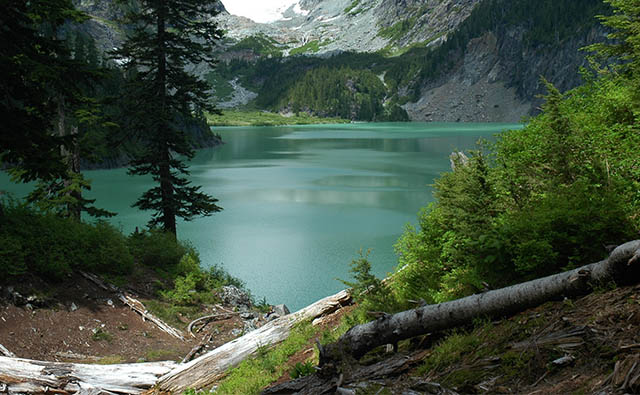Industry News, Coatings
Not every renewable raw material is sustainable

Industry News, Coatings

BASF is offering dispersions for the coatings industry that are produced entirely from renewable raw materials. We spoke to Nikolaus Raupp, Global Sustainability Manager at BASF, about the new verified biomass balance process, sustainability and economic feasibility of renewable materials.
Dr. Nikolaus Raupp: We see a growing interest among our customers in sustainable products that are produced from renewable raw materials.
Raupp: We add the renewable resources at the very beginning of the production chain. This means that we do not have to build new plants, but rather use our existing Verbund structure in an ideal way. The renewable raw materials that we use are bionaphtha and biogas.
Raupp: What you have to bear in mind: The Ludwigshafen site covers an area of more than 10 km² with 160 production facilities and a pipeline network of over 2,800 km. The quantities that are processed there are therefore enormous. Due to the large number of process steps, only a small proportion of biomass molecules end up in the final product.
Almost all chemical production begins with the steamcracker, which is continuously fed with naphtha. With the biomass balance approach, we add bionaphtha to the naphtha feed. The resulting cracker products then serve as feedstocks for all other production plants – this is our Verbund approach. Therefore, renewable raw materials form the basis for the production of chemicals, including our dispersions. In other words, what is special about our biomass balance approach is that renewable raw materials come into play at the very beginning of the production chain.
It sounds as though it is comparable with green electricity, where the exact origin of each individual electron is also unclear.
Raupp: Yes, you could put it like that. Since we have the entire value chain on site and therefore know all the technical data, we are able to calculate very precisely for each product how much we need to feed in at the beginning of the production process. The final product is therefore precisely linked to the bionaphtha: on the one hand by mathematical traceability via the intermediate production steps, and on the other hand by the TÜV Süd certification standard CMS 71 “Certification of the use of renewable raw materials.” Our customers receive a certificate documenting the use of renewable raw materials. So, if our customers purchase a biomass-balanced product they can be sure that for its production the quantity of fossil raw materials was replaced by the corresponding quantity of renewable raw materials at the beginning of our production chain.
Raupp: No. It’s very important for us and for our customers that the raw materials meet strict sustainability criteria. Because not every renewable raw material is sustainable per se.
The origin of the biogas we use is very easy to explain: It is completely derived from organic waste – mostly agricultural and kitchen waste – that is generally from Germany.
In the case of bionaphtha, we are continually working to maintain and further increase the high proportion from derived from residual materials, primarily organic waste.
However, bionaphtha also contains a certain amount of vegetable oils which are by-products of biodiesel production.
Raupp: All our raw materials for the biomass balance approach are certified according to accepted sustainability criteria. For them to be approved by our certifier TÜV SÜD the raw materials must comply with the EU’s Renewable Energy Directive (RED).
At least once a year but usually more often, TÜV Süd visits us and audits, for example, our SAP system, and retraces the physical flow of our products. In some cases, even the flow meters in individual plants are tested or the use of calibrated scales is checked. In addition, we are in constant contact with various NGOs.

Figure 1. How the biomass balance method works. ©European Coatings
Raupp: As already mentioned, TÜV Süd’s certification standard requires all raw materials to be EU RED-compliant. This legislation in turn requires that renewable resources guarantee that greenhouse gas emissions are reduced by a minimum of 50%. However, depending on the raw material and the processes for the final product, the reduction can even be as high as 70%.
Raupp: In theory, our customers are free to choose and we can calculate any desired percentage, but most customers want 100%.
Raupp: The renewable raw materials that we use and that are produced according to accepted sustainability standards are much more expensive than fossil resources.
However, when considering the costs of a biomass-balanced end product it is important to bear in mind how many renewable raw materials we actually need, since we can only replace the fossil components at the beginning of the production chain.
Furthermore, our products are usually just one of many components used by the customer. Overall, the higher cost of sustainable renewable raw materials is indeed the greatest challenge.
Raupp: That is currently still the case, but a growing number of consumers place a high value on sustainability.
Raupp: Our impression is that the price of certificates does not currently play a role in the decision for or against biomass-balanced products.
Raupp: Of course. We are working to expand the use of renewable raw materials as feedstock for our products and are in dialogue with various stakeholders. Our long-term goal is to further expand the concept.
The biomass balance method will be one of the Topics at the EC Technology Forum – Coatings from Renewable Resources. The Conference will be held on September 27-28 in Berlin. Nikolaus Raupp will give a short course on the biomass balance method and how to align costs, performance and sustainability. Other speakers from industry, Universities and Institutes will give lectures and hands-on workshops about renewable polymer building blocks, a new lignin-based binder, renewable alternatives for UV-curing applications and much more.
Early-Bird-Registration is available until 18 Aug 2017!